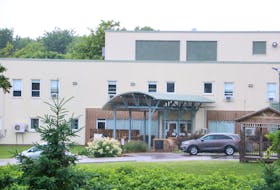School is in, mornings are crisp, and my calendar is filling up. It must be fall, but tourist season still has a few weeks to run. Even now people with cameras are walking downtown, looking up and pointing as they walk. Our built heritage fascinates.
Built heritage is a “hot-button” topic these days all across the province, from Halifax battling to preserve waterfront buildings to Amherst’s struggle to keep its signature 19th century “Busy Amherst” homes and storefronts intact.
But what do most people think of when they hear the term “built heritage”?
I’d be willing to bet that images like Rome’s Coliseum, Notre Dame in Paris, Hadrian’s Wall, or even Canada’s Parliament Buildings come to mind.
What do all of these iconic places (ancient or just old) have in common? Their look, their lines, their architecture, all send non-verbal messages much stronger than words and clearly much longer lasting. They tell us about who we were, what we valued, and maybe even hint at where we might be able to go. And we have lots of these in Amherst.
Two thousand years ago, Emperor Hadrian and his predecessor Caesar Augustus, both great builders, knew and understood that architecture’s greatest strength was not in its appeal to the eye but rather in its ability to communicate ideologies, strength and power…and they used it to their advantage as they governed.
In 1857, Queen Victoria, another powerful leader of an empire, named a small town up the Ottawa River on the 45th parallel as the site for the newly proposed capital of a country called Canada. Clearly, those proposing the new nation also understood that architecture could play a pivotal role in communicating Canada’s importance and position to the world. Canada’s parliament was to meet high on a promontory overlooking the Ottawa River.
In 1859 a competition was arranged to pick the best design. English-born Thomas Fuller and his associate Chilion Jones won the contract for a Gothic Revival House of Parliament. It opened on June 6, 1866, a full year before Confederation became a reality.
By the 1870s, the new government decided that it was about time to show a strong presence in cities and towns across the country and they devised a plan to use architecture to make a strong statement about power and success. In 1881, Fuller became the Canada’s Chief Dominion Architect and immediately started to plant the federal stamp right across the country, often in the form of a Post Office and/or Customs House. The buildings were grand and spoke loudly of the wealth, power and trustworthiness that stood behind them.
We in Amherst, along with other communities, received a Thomas Fuller post office. Built in 1886 by Amherst’s well-known Amherst Rhodes Curry from red sandstone quarried locally, it sat tall and proud at the Town’s main entrance, welcoming all to a place of importance. Local craftsmen added floral carvings and then a magnificent copper-clad clock with four faces. Who could doubt that important things happened in a community that was home to such grandeur?
About this same time, Amherst’s prosperity really began to grow as successful businesses like Rhodes Curry, Amherst Boot and Shoe, Hewson Woolen Mills, Tingley Granite, and more took advantage of Amherst’s central Maritime location and the fact that it straddled the mainline of the Intercolonial Railway. Local entrepreneurs created more grand buildings: 1887 James Hickman built the Hickman House (Duncan’s), 1888 a cut-stone courthouse followed, 1889 Tupper’s Block (now CANSA) appeared. Factories sprang up, employees flocked in, and houses of all sizes were built.
Take a quick walk through Amherst to see how these powerful Nova Scotian industrialists and professional chose designs that spoke to their power and wealth. Then look too at the older, smaller homes. Each makes a statement about Amherst.
Amherst Area Heritage Trust works to protect, preserve, and promote Amherst’s built heritage. (Join us on the second Wednesday of every month at 7 at the museum).
Leslie Childs is a member of the Amherst News Community Editorial Panel.








